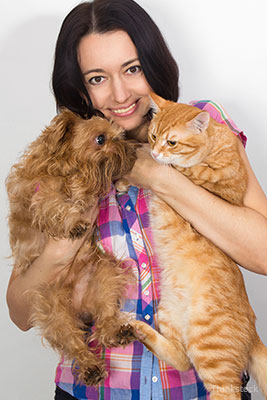[ad_1]
Not too long ago, I’ve seen a rash of regarding Web headlines in reference to a new analysis examine. The headlines may lead you to imagine that cats love you lower than canines, nonetheless, these headlines are deceptive and don’t give an correct overview of what the examine actually discovered.
 The ‘Safe Attachment’ examine
The ‘Safe Attachment’ examine
In line with the PLOS One web site, the place the examine by Alice Potter and Daniel Mills is revealed, it concerned twenty guardian-cat pairs. The cats had been positioned in two rooms with two chairs (one for the guardian and one for a stranger) together with some cat toys and coated home windows. A video digicam taped the interplay between every cat, the guardian and the stranger throughout a wide range of behaviors (guardian leaving and returning, stranger leaving and returning, and many others.) The researchers used a check generally known as the “Ainsworth Unusual State of affairs” to gauge the habits of the cats when it comes to how a lot attachment the cats appeared to have with their guardians.
The ‘Safe Attachment’ examine outcomes
Researchers discovered that cats within the check did vocalize extra when their guardian left, in comparison with the stranger leaving, however they “didn’t see any further proof to recommend that the bond between a cat and guardian is one in every of safe attachment.”
The researchers certainly discovered that “many points of the habits of cats…should not per the traits of attachment.” Nonetheless, additionally they famous that the check didn’t look into whether or not there could also be variations in attachment between cats which are indoor solely and indoor/out of doors, and so they additionally famous that the check they used could not have been an efficient instrument to find out cats’ attachments to guardians. Particularly, they said that “…we don’t want to indicate that cats don’t kind some type of affectionate social relationship or bond with their house owners…solely that the connection with the first caregiver shouldn’t be sometimes characterised by a desire for that particular person based mostly on them offering security and safety for the cat.”
What does all of this actually imply?
What this implies is that cats don’t show the identical kind of attachment to their guardians that canines do when it comes to seeing the guardian as a supply of security and show extra behaviors that we might time period “unbiased.” This doesn’t imply in any respect that cats don’t take pleasure in their relationship with their guardians – they merely search human companionship for various causes and in several methods from canines.
For instance, the examine discovered that when utilizing the Ainsworth check with canines, standing by the door, the place the guardian had exited, was a key measure for figuring out attachment and even separation nervousness. They didn’t see this habits among the many cats within the examine, however that will not be as a result of cats don’t miss you – the researchers notice this may very well be on account of the truth that “cats don’t present misery on this means.”
Inside a cat’s social community, you don’t see the identical form of sturdy social bonds that you will notice in groupings of canines. This can be on account of cats being extra solitary hunters and never needing to bond as carefully with social teams to be able to survive1.
In contrast to canines, who’ve been working and dwelling with people far longer, cats don’t look to individuals for his or her every day wants. Nonetheless, they do clearly kind social bonds with their house owners and present “affectionate” habits, in addition to a desire for his or her guardian(s) over non-household people. Briefly, don’t let catchy headlines make you doubt your cat’s love.
Sources
- Crowell-Davis SL. 2007. Cat habits: Social group, communication and growth. In: Rochlitz I, editor. The Welfare of Cats. Dordrecht: Springer, pp. 1-21.)
[ad_2]
